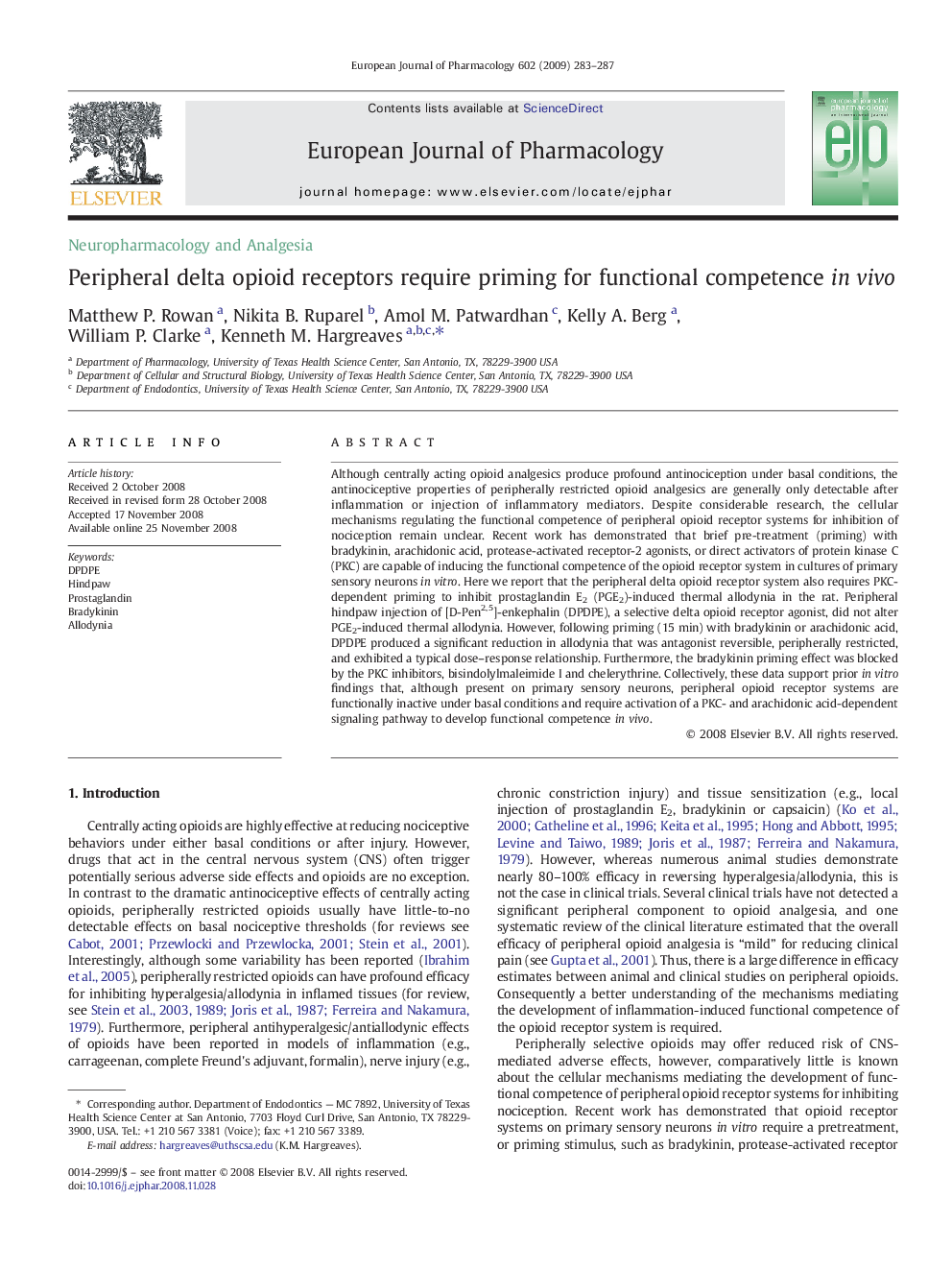| Article ID | Journal | Published Year | Pages | File Type |
|---|---|---|---|---|
| 2534511 | European Journal of Pharmacology | 2009 | 5 Pages |
Although centrally acting opioid analgesics produce profound antinociception under basal conditions, the antinociceptive properties of peripherally restricted opioid analgesics are generally only detectable after inflammation or injection of inflammatory mediators. Despite considerable research, the cellular mechanisms regulating the functional competence of peripheral opioid receptor systems for inhibition of nociception remain unclear. Recent work has demonstrated that brief pre-treatment (priming) with bradykinin, arachidonic acid, protease-activated receptor-2 agonists, or direct activators of protein kinase C (PKC) are capable of inducing the functional competence of the opioid receptor system in cultures of primary sensory neurons in vitro. Here we report that the peripheral delta opioid receptor system also requires PKC-dependent priming to inhibit prostaglandin E2 (PGE2)-induced thermal allodynia in the rat. Peripheral hindpaw injection of [D-Pen2,5]-enkephalin (DPDPE), a selective delta opioid receptor agonist, did not alter PGE2-induced thermal allodynia. However, following priming (15 min) with bradykinin or arachidonic acid, DPDPE produced a significant reduction in allodynia that was antagonist reversible, peripherally restricted, and exhibited a typical dose–response relationship. Furthermore, the bradykinin priming effect was blocked by the PKC inhibitors, bisindolylmaleimide I and chelerythrine. Collectively, these data support prior in vitro findings that, although present on primary sensory neurons, peripheral opioid receptor systems are functionally inactive under basal conditions and require activation of a PKC- and arachidonic acid-dependent signaling pathway to develop functional competence in vivo.
